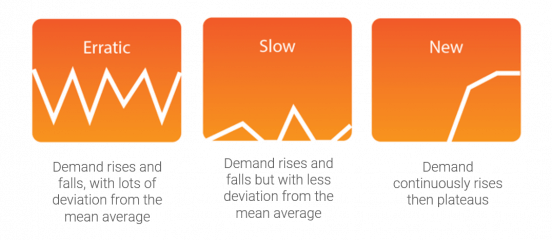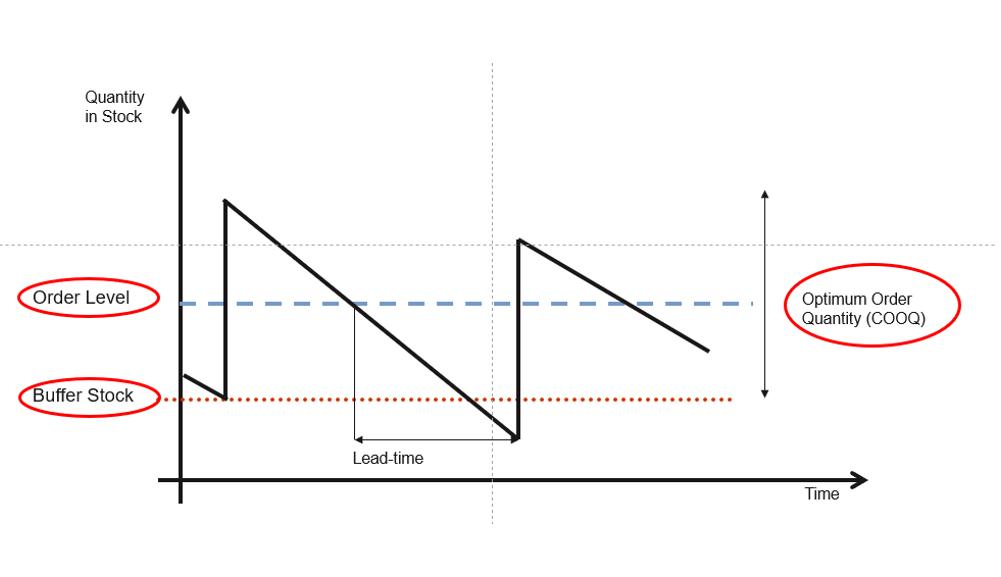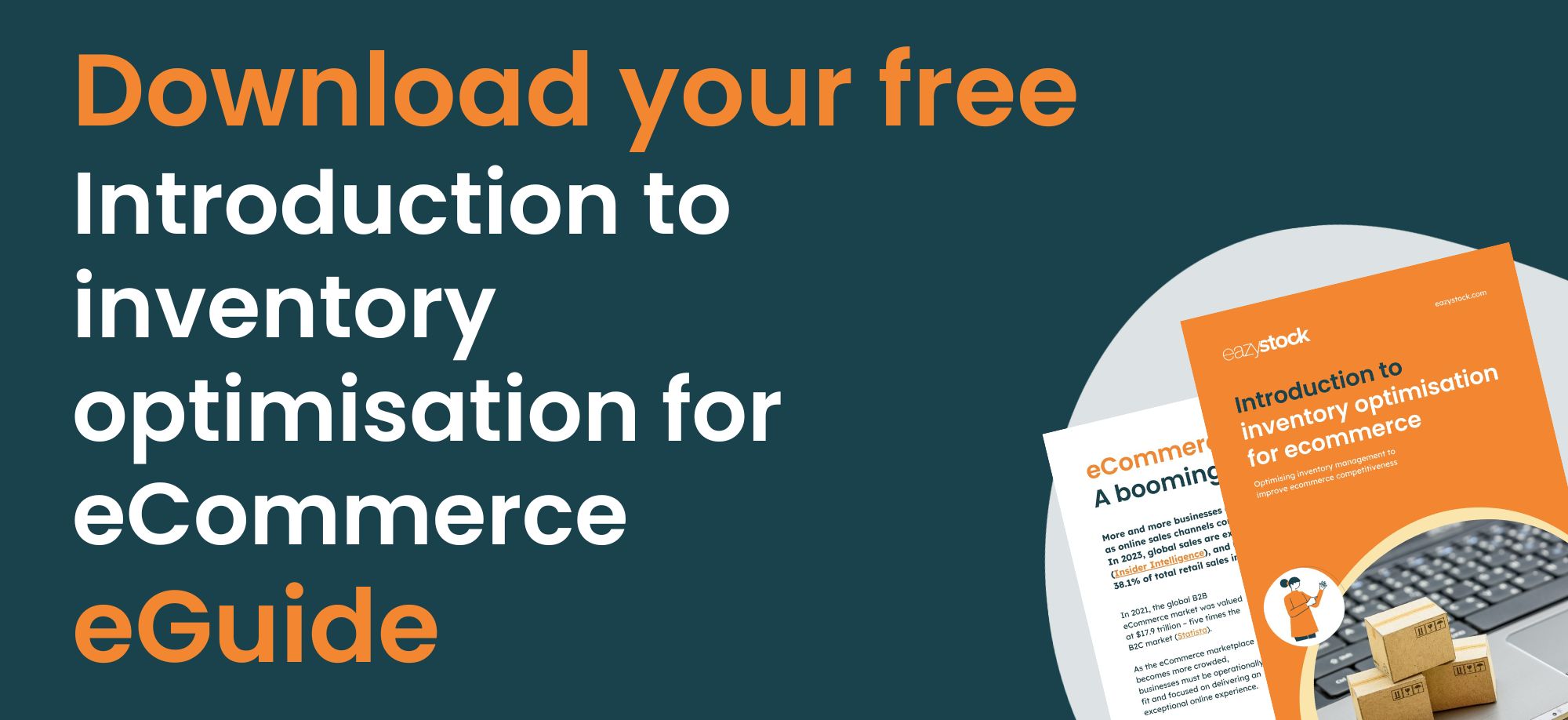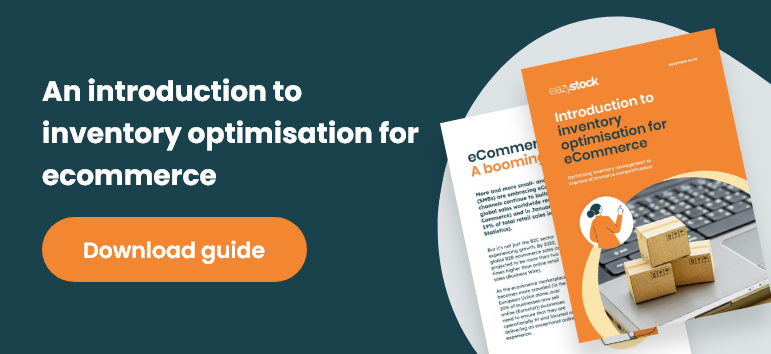How to improve eCommerce inventory management
Better inventory management for ecommerce businesses
Since the coronavirus pandemic, the growth in ecommerce sales has been phenomenal. But if you think this is just in the B2C marketplace then think again!
A recent report by Digital Commerce 360 showed that online sales on B2B ecommerce sites, log-in portals and marketplaces increased 17.8% from $1.39 trillion in 2020 to $1.63 trillion in 2021.
This is backed up by research from Wunderman Thompson, which found that 49% of B2B purchases are now made online.
Whilst this growth was no doubt accelerated by the shift to online sales due to the pandemic. The trend is not slowing down. A report release by McKinsey in January 2022 found that 65% of B2B companies now offer e-commerce capabilities (fully executing a sales transaction online). This is up from 53% in early 2021.
With this global movement comes a wealth of opportunities for businesses, both large and small, to expand their reach and target new customers. But at the same time, it also brings increased competition, with new players continually entering the marketplace and vying for a piece of the action.
For businesses to succeed in ecommerce they must ensure they have an effective ecommerce supply chain strategy. This means their supply chain operations must be as efficient at serving ecommerce sales channels as they are at fulfilling offline markets. A critical area of focus should be your ecommerce inventory management processes. Want to know how? Watch our short video and then read on…
Improving your ecommerce inventory management
Ecommerce inventory management involves ordering, managing, storing and moving inventory to fulfil online sales. As an element of supply chain management, inventory management supervises the flow of goods from manufacturers to warehouses and onto relevant ecommerce multi-channel sales outlets.
You can optimise your inventory management practices for ecommerce competitiveness in the following ways:
How to manage ecommerce inventory
1. Ecommerce inventory forecasting
The ecommerce marketplace is dynamic and demand can dramatically fluctuate up and down. Retailers and wholesalers therefore need to be agile enough to respond to changes in customer demand and proactively anticipate the fluctuations.

Using historical demand data alone is not enough to forecast accurate demand – especially when markets are unpredictable and you carry items with erratic and sporadic demand. Statistical demand forecasting is much more effective, as it analyses historical demand patterns at SKU level and assigns a suitable algorithm to calculate upcoming demand, based on this demand pattern.
With such different demand patterns, it doesn’t make sense to treat every item the same. In each case the future demand forecasting, replenishment and safety stock calculations are treated differently. With sufficient stock levels you can then take advantage of surges in demand and prevent overstocking when sales die off.
2. Seasonality, trends, promotions and new products
Seasonality, demand trends and promotional activity all impact demand and are important to add to a base forecast to improve its accuracy.
Seasonality: Understanding how the seasons or annual festivals like Christmas or Diwali impact product demand will ensure you don’t lose sales due to shortages during peak seasons, or have expensive surpluses as demand tails off.
Trends: Whereas seasonality effects demand on a regular basis causing peaks and troughs, a trend will move demand in one direction over a period of time.

Promotions: In addition, promotional activities such as special offers, discounts and long-term price drops will impact the overall demand for your product.
In summary, ecommerce inventory forecasting helps estimate future stock needs across all your ecommerce sales channels, to ensure product availability and help drive customer satisfaction. In addition, this information can be shared with suppliers, to improve their service levels and help plan deliveries more strategically helping improve the cost-efficiency of your supply chain.
3. Accurate ecommerce inventory replenishment
Whilst it’s important to accurately forecast ecommerce inventory demand, it’s equally critical to work out the most cost-effective means of fulfilling that demand. Many ecommerce organisations believe that they need to carry excessive amounts of stock to ensure stock availability. This is not true. Here’s why…
Using inventory optimisation techniques you can accurately calculate how much stock to order and when to order it, so you have enough to meet demand without tying up too much capital.
This is done by calculating accurate reorder points and quantities, and sufficient safety stock levels, so the risk of stock-outs is drastically reduced. The calculations can be quite complex, as they also take into account:
Service level – probability of not having a stock-out, or the probability of not losing sales e.g a 95% service level target means you’ll fulfil 95% of orders.
Lead time – time it takes your supplier to deliver, from purchase order to stock in the warehouse.
Safety stock – stock used to cover any uncertainty in demand during the lead time.
Reorder point – point at which the order is placed.
Optimum order quantity – amount of items ordered, when taking into account the demand forecast, lead times and any supplier constraints e.g number of deliveries per year, max/min order quantities.

The diagram below shows how these elements are related:By optimising your replenishment processes you can be sure that you’ll have the right products available to meet your expected demand, whilst also carrying sufficient safety stock in case of unforeseen surprises. In addition, you’ll be able to do so without the cost of holding excess stock.
4. Stock level optimisation
So far we’ve shown how statistical demand forecasting and inventory optimisation techniques help ecommerce businesses cost-effectively replenish stock to ensure that demand can be met. The final part of the jigsaw is knowing what products to hold in the warehouse.
Inventory classification models such as ABC inventory analysis allow you to group products based on their value to your business and how often they are picked. You can then define their corresponding service levels. The result is the creation of a matrix of stock items, with varying stocking rules. For example:
- Fast moving, lower value items that have a high service level should be stocked well, as they are cheap to stock/sell and you want to ensure their availability.
- In contrast, high value items that are rarely picked may not even be stocked and will be fulfilled to order.
By setting stocking rules you can prioritise the items you hold in stock and free-up working capital to invest in other areas of the business.
Freeing-up working capital could be extremely useful for ecommerce companies looking to gain a competitive edge in the marketplace, allowing increased investment in marketing activity, new sales channels or new product lines.
Automating inventory management for ecommerce efficiency
By employing some of the inventory management techniques we’ve discussed above, you’ll be able to manage your ecommerce inventory more efficiently and cost-effectively, improving your competitiveness as you go.
However, implementing demand forecasting using algorithms and carrying out advanced inventory optimisation calculations can prove complex and time-consuming, so consider the use of software to support.
Whilst some enterprise resource planning (ERP), warehouse management systems (WMS) and ecommerce platforms offer basic ecommerce inventory management functionality, investing in specialist inventory optimisation software will ensure you have the tools you need for the job.
Software like EazyStock is quick and easy to set up and will do all the hard work for you, so you have more time to analyse findings and make informed, strategic decisions.
For more information on EazyStock email us or call 0121 312 2992.
Want to know more about ecommerce inventory management and optimisation? Download our latest eGuide below:
First published on 26 October 2017, updated December 2020.












